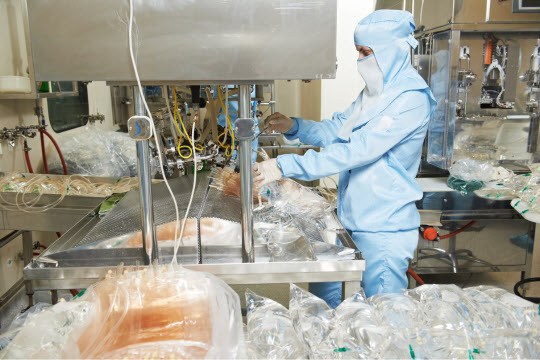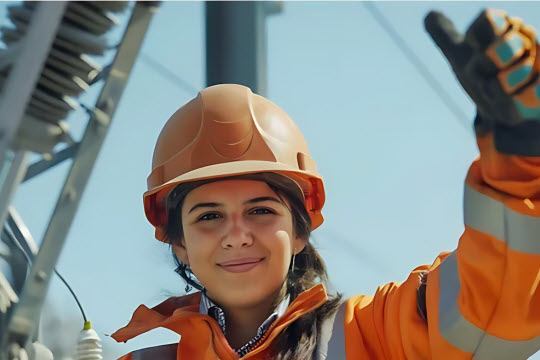
Combining AI and a Connected Workforce for Workplace Safety and Optimization
IoT Ecosystem Empowerment: Advancing Workplace Safety and Efficiency with RTLS
The Internet of Things (IoT) has arrived
In the dynamic realm of digital technology, the imperative of enhancing workplace safety and efficiency has taken center stage. Leading this transformation is the Internet of Things (IoT), a technology interconnecting everyday objects and devices. Beyond its initial hype, IoT has permeated various aspects of life, influencing intelligent buildings, smart cities, and innovations like autonomous vehicles and drones. At the heart of IoT's impact is its capacity to facilitate connections and data sharing across devices, enabling real-time analysis and decision-making. This technological progress has opened up new opportunities for operational optimization, cost reduction, risk mitigation, and enhanced performance.
This blog post delves into the influence of IoT on workplace safety and efficiency, with a specific focus on the integration of Real-Time Location Systems (RTLS). Leveraging technologies such as Bluetooth xMesh, RFID, Global Navigation Satellite System (GNSS), and Wi-Fi, RTLS provides real-time tracking of assets and personnel. Its applications extend across diverse industries, including manufacturing, healthcare, supply chain and logistics, and even demanding sectors like oil, gas, and mining.
Through an exploration of practical applications and the potential of IoT and RTLS, this post aims to offer insights into how these technologies are currently shaping industries and what they hold for the future of workplace management.
Introduction to IoT and RTLS
The advent of the digital era has brought forth numerous innovations, with the Internet of Things (IoT) standing out as a pivotal force, reshaping our engagement with technology.
IoT constitutes a complex network of interconnected devices and systems, revolutionizing industries across the board by facilitating communication and data exchange. From manufacturing to healthcare, IoT has played a central role in creating smarter, more efficient, and highly responsive operational environments.
Real-Time Location Systems (RTLS) emerges as a key player in this technological revolution, redefining efficiency, safety, and real-time interaction within the IoT landscape. RTLS offers precise, real-time location data, serving a crucial function in various applications, ranging from intricate asset tracking in large warehouses to ensuring personal safety in high-risk environments. Beyond location tracking, RTLS plays a pivotal role in the intricate machinery of IoT ecosystems, enhancing decision-making processes, optimizing operational workflows, and effectively managing risks.
In summary, RTLS serves as a critical enabler within the IoT ecosystem, providing the real-time data necessary for systems to not only interconnect but also become intelligent and adaptive. As we navigate further into the IoT era, RTLS emerges as a key technological ally, propelling innovation, bolstering safety, and streamlining operations in an increasingly interconnected world.

Enhancing Efficiency
RTLS plays a crucial role in enhancing operational efficiency, particularly in industrial settings within the IoT framework. Through real-time tracking of assets and personnel, it optimizes workflows, reduces downtime, and enhances overall productivity. The real-time visibility provided by RTLS goes beyond mere tracking, extending to monitoring asset conditions. This facilitates proactive strategies such as predictive maintenance, minimizing unplanned downtime, and extending equipment lifespan, leading to significant long-term cost savings.
Moreover, RTLS-driven systems contribute to workflow optimization by providing actionable insights into the movement and utilization of resources. Organizations can promptly identify and address bottlenecks and inefficiencies, enabling streamlined processes and efficient resource allocation. The real-time tracking of personnel not only enhances safety but also reduces human errors, particularly crucial in precision-focused industries.
Enhancing Safety
RTLS is pivotal in elevating safety standards across diverse industries, especially in high-risk environments like construction sites and manufacturing plants. Through real-time tracking of employee locations, RTLS swiftly identifies and responds to potential safety hazards, mitigating accidents and ensuring compliance with safety regulations.
Complementing this, broader IoT technologies, including wearable devices, make significant contributions to workplace safety by alerting workers to immediate dangers such as proximity to hazardous areas or exposure to harmful substances. Together, RTLS and IoT wearables create a comprehensive safety system that reduces accident risks and enhances overall workplace safety.
The integration of RTLS within IoT ecosystems represents a significant technological development, reshaping the implementation of smart solutions across industries. By enabling IoT systems to leverage real-time location data effectively, RTLS enhances both operational efficiency and safety. Whether optimizing industrial workflows or improving safety protocols in high-risk environments, RTLS, in collaboration with other IoT technologies, plays a vital role in refining and advancing the functionality of interconnected systems. This integration not only streamlines processes but also underscores the critical role of RTLS in the evolving landscape of IoT applications.
How SmartX HUB using IoT can help ?
Looking ahead, the continuous advancement of IoT and RTLS technologies is poised to unfold at an exponential pace. In the future, the data insights furnished by RTLS are anticipated to become more sophisticated, empowering businesses to make increasingly informed decisions and elevate safety and efficiency to new heights.
The proliferation of 5G networks and cloud computing is expected to drive innovation in the IoT space by providing heightened data processing power and connectivity, further propelling the applications of IoT and RTLS. Ongoing advancements in AI and machine learning are projected to seamlessly integrate with RTLS, resulting in even more intelligent and autonomous systems.
These forthcoming developments hold the promise of introducing a new level of sophistication to the utilization of RTLS within IoT ecosystems. From predictive maintenance to enhanced risk management, the possibilities are extensive. This progress is poised to not only refine operational efficiency but also unlock new opportunities for safety and user engagement.
SmartX HUB’s global presence and deep industry and business transformation expertise have proven that the methodologies and experience gained from thousands of worldwide engagements help clients achieve actual business results and innovation quickly and cost-effectively.
To get more information on how we can help you overcome the challenges to your construction business or to check out a free demo, contact us.
Combining for Workplace Safety and Optimization AI and a Connected Workforce for Workplace Safety and Optimization with Smartx HUB
Designed to align with the mandates of organizations within the sector, the platform transforms smartphones and wearables into a comprehensive operational and safety tool. It empowers workers with connected insights and information, which loops back to decision-makers, creating a holistic ecosystem of data and engagement.



